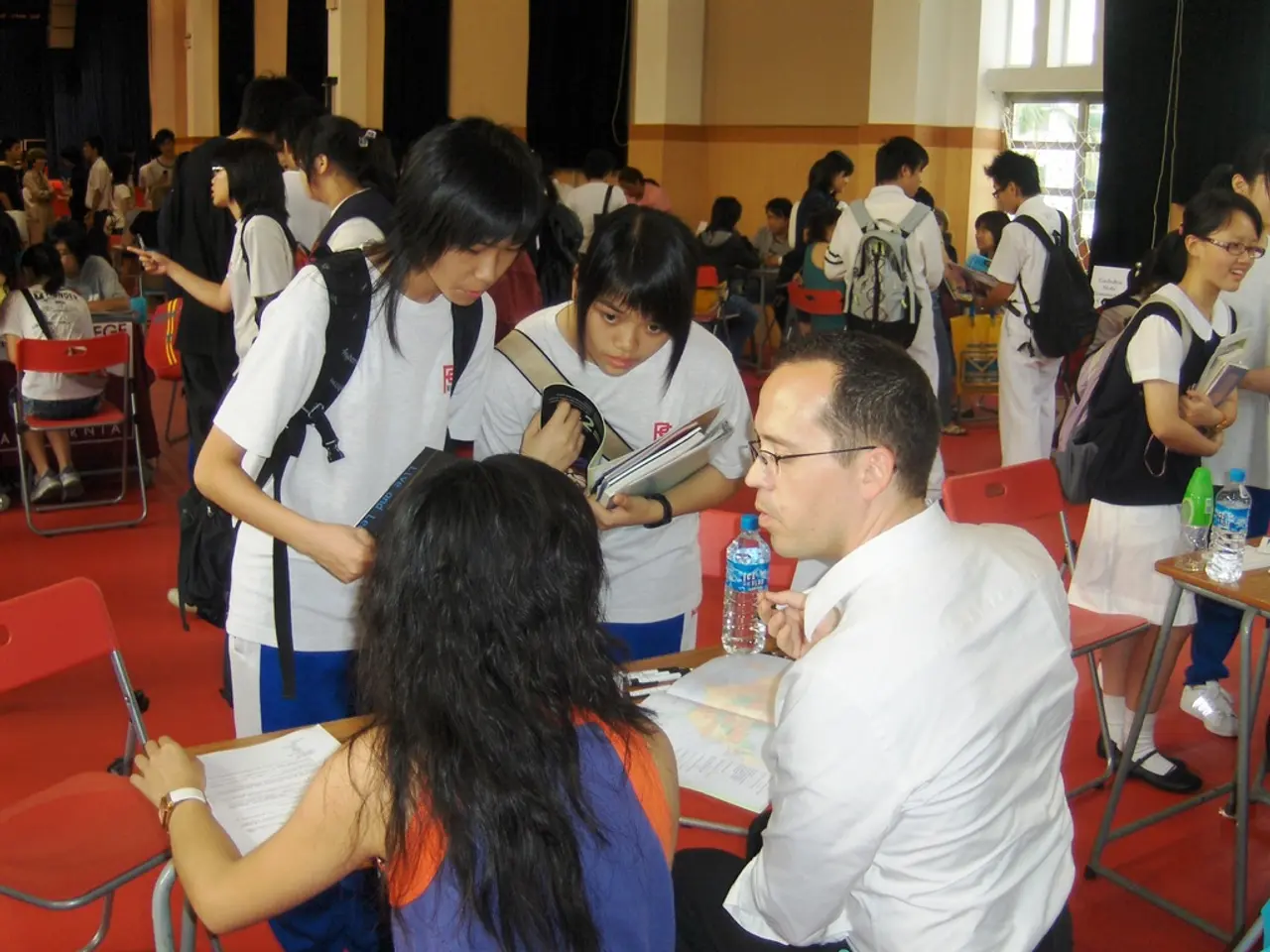"Exploring Instructional Rounds as an Alternative Method to Conventional Teacher Training"
In large school districts, the traditional approach to professional development (PD) is being transformed by Instructional Technology Coaching Rounds, a method inspired by medical rounds. Aimee Bloom, the Supervisor of Instructional Technology for Buffalo Public Schools, is leading this change.
Instructional Technology Coaching Rounds involve small teams of educators visiting classrooms together, observing teaching with technology, and engaging in reflective conversations about practice. This approach fosters deeper collaboration because teachers see varied instructional approaches in real settings, share insights, and problem-solve collectively.
The coaching rounds replicate the medical rounds approach, creating a stress-free environment for teachers to collaborate about what and how they teach. Aimee Bloom emphasizes the importance of learning from each other without feeling judged in these rounds. Norms are established during the rounds to ensure a productive and respectful learning environment.
This method provides structured, ongoing, and reflective opportunities for teachers and instructional coaches to observe, discuss, and improve technology integration and instructional practices collaboratively. It supports sustained instructional shifts, creates accountability, and fosters a professional learning community that helps teachers overcome challenges and persist with new strategies that enhance student learning.
By improving teacher collaboration and instructional coherence, coaching rounds enhance student outcomes. Instructional coaching and collaborative learning environments are linked to more effective classroom instruction and positive impacts on student achievement and social-emotional learning (SEL). While instructional technology coaching rounds focus on the integration and effective use of technology tools, the ultimate goal is strengthening teaching, resulting in better engagement and learning results.
Aimee Bloom suggests starting small and gradually expanding the instructional rounds program. She uses various tools such as Google, Microsoft, Schoology, Adobe, Canva, Infinite Campus, and Clever for these rounds. The diversity of languages in some schools is seen as a learning opportunity, as teachers can learn from each other's strategies for teaching students with different linguistic backgrounds.
Instructional rounds, a concept not new to education, can potentially lead to more well-adjusted students by bridging the gap between curriculums and grade levels. By learning from each other, teachers can translate their observations into instructional rounds, allowing them to learn from one another and potentially lead to a more cohesive and effective educational environment.
However, Aimee Bloom does not mention specific requirements a district needs to implement instructional rounds or any specific sites for educator professional development. She also does not explicitly mention any potential drawbacks or adverse comparisons to traditional PD in this context. Nonetheless, the benefits of Instructional Technology Coaching Rounds in fostering teacher collaboration and improving student success are clear.
- Aimee Bloom, the Supervisor of Instructional Technology for Buffalo Public Schools, is leading a transformation in large school districts, incorporating Instructional Technology Coaching Rounds into professional development (PD).
- Instructional Technology Coaching Rounds convene small teams of educators for classroom visits, observing teaching with technology and engaging in reflective conversations about practice.
- This collaborative learning approach offers structured, ongoing, and reflective opportunities for teachers and instructional coaches to observe, discuss, and improve technology integration and instructional practices.
- By fostering deeper collaboration, coaching rounds enhance student outcomes, linking to more effective classroom instruction, positive impacts on student achievement, and social-emotional learning (SEL).
- Aimee Bloom emphasizes the importance of learning from each other without judgment in these rounds, establishing norms to ensure a productive and respectful learning environment.
- For the implementation of instructional rounds, Aimee Bloom suggests starting small, using various tools like Google, Microsoft, Schoology, Adobe, Canva, Infinite Campus, and Clever, and gradually expanding the program as a learning opportunity for teachers across diverse linguistic backgrounds.




